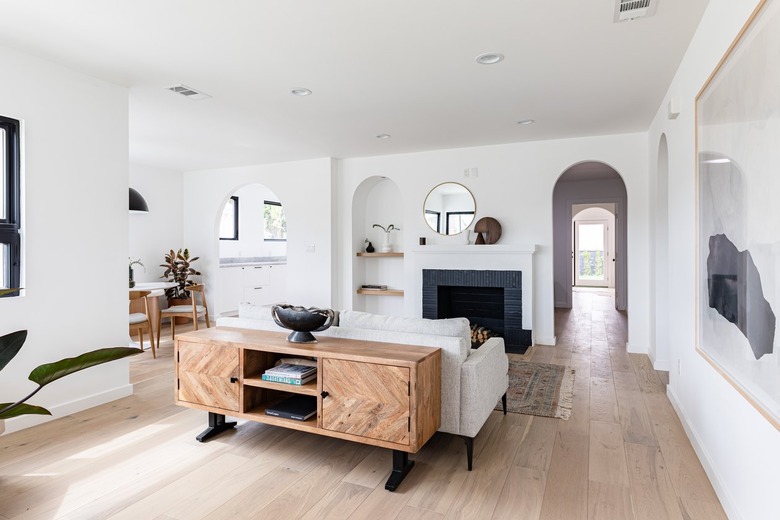Birch Plywood Vs. Oak Plywood
Plywood is one of the most common materials used in homebuilding, but the different varieties can vary significantly in quality, durability, size and construction. While many people associate plywood with particleboard or other pressed-wood products of a lower quality, plywood comes in numerous forms and much of it is made of durable, high-quality material.
What is Plywood?
Put simply, plywood is factory-produced wood. It's engineered from what's typically at least three thin sheets or plies of wood. These are glued together with resin to make a single thick and flat sheet. This forms the core of the plywood. The sheets in the core are glued together with each layer's wood grain running perpendicular to the grain of the layer beside it. This gives plywood its durability.
The face of the plywood refers to the additional sheets attached to the front and back of the core. These are sometimes polished or stained for aesthetic reasons. Plywood facing can be made of softwood or hardwood. Generally, the softwood used on plywood's internal plies are made of Douglas-fir or pine. Hardwood facing is generally made of ash, maple, oak and mahogany. Because of plywood's durability, it's used for a wide range of building projects.
Birch Plywood
Birch plywood is one of the most popular varieties of plywood on the market. Baltic birch plywood, specifically, is unique amongst the most durable of plywoods because of its all-birch core. Baltic birch plywood's inner core is typically made up of sheets of Baltic or Russian birch approximately 1.5 millimeters thick and is laminated with a superior exterior-grade adhesive. This means that there are no holes or voids in the core of the wood, making it exceptionally sturdy.
Baltic birch plywood has excellent screw-holding capabilities because the core layers are a hard birch wood versus a softer wood that can spread and loosen when screws are inserted. The layers of the core are also attractive when viewed from the edge and can be sanded, polished and lacquered without any staining necessary. Baltic birch plywood also has a very thick front and back veneer, making it nearly impossible to accidentally puncture or sand through. Baltic birch is typically made in 5-by-5-foot sheets for the European cabinetry market but can be cut for other projects.
Oak Plywood
Oak plywood is also a heavy, hard plywood with a strong durability rating and excellent wear resistance. There are several different grades of oak plywood, including white and red oak. Both are quite strong, but white oak has a greater tendency to chip or splinter. Oak plywood typically has about seven layers of plies, but it varies according to thickness, and quality may varies between big-box stores and specialty wood suppliers. Lumber suppliers tend to have a wider variety of thicknesses than big box stores. Oak plywood comes in 4-by-8-foot sheets.
Staining Both Varieties of Plywood
To evenly stain Baltic birch plywood, you'll need to apply a coat of shellac or stain controller to ensure a uniform stain. Otherwise, because of Baltic birch's naturally attractive appearance, you might want to simply apply a clear lacquer to the wood for shine and protection, and leave it in its natural color.
You can easily apply stain or finish to oak. Stain and other topcoats absorb into the wood very well, and there's no preparation process required to fill the wood's pores before you apply the stain.
